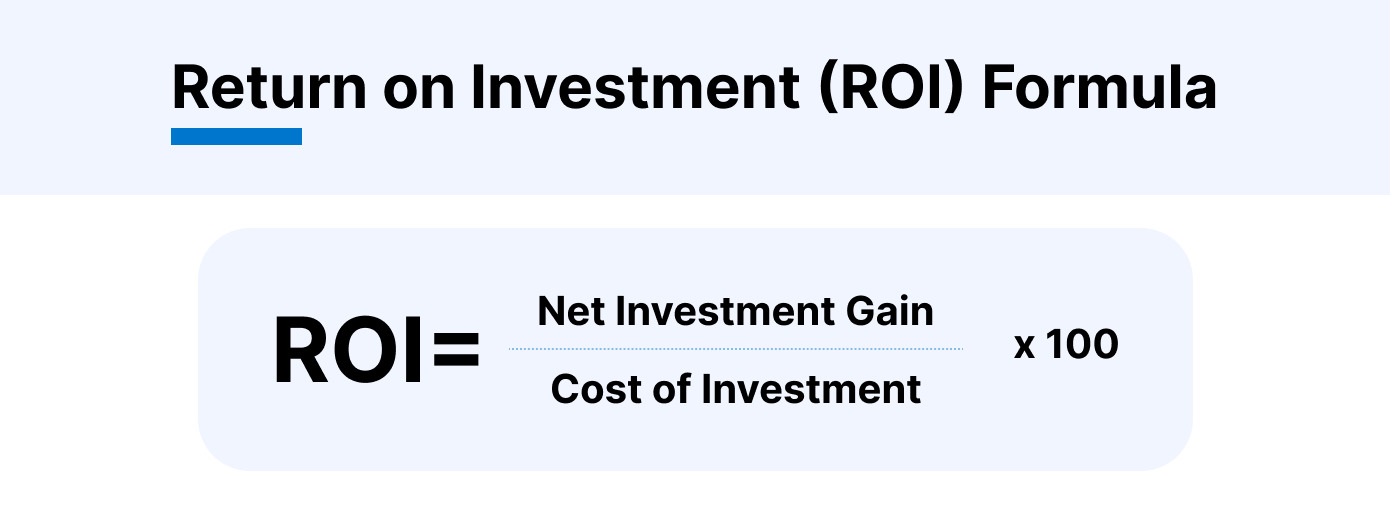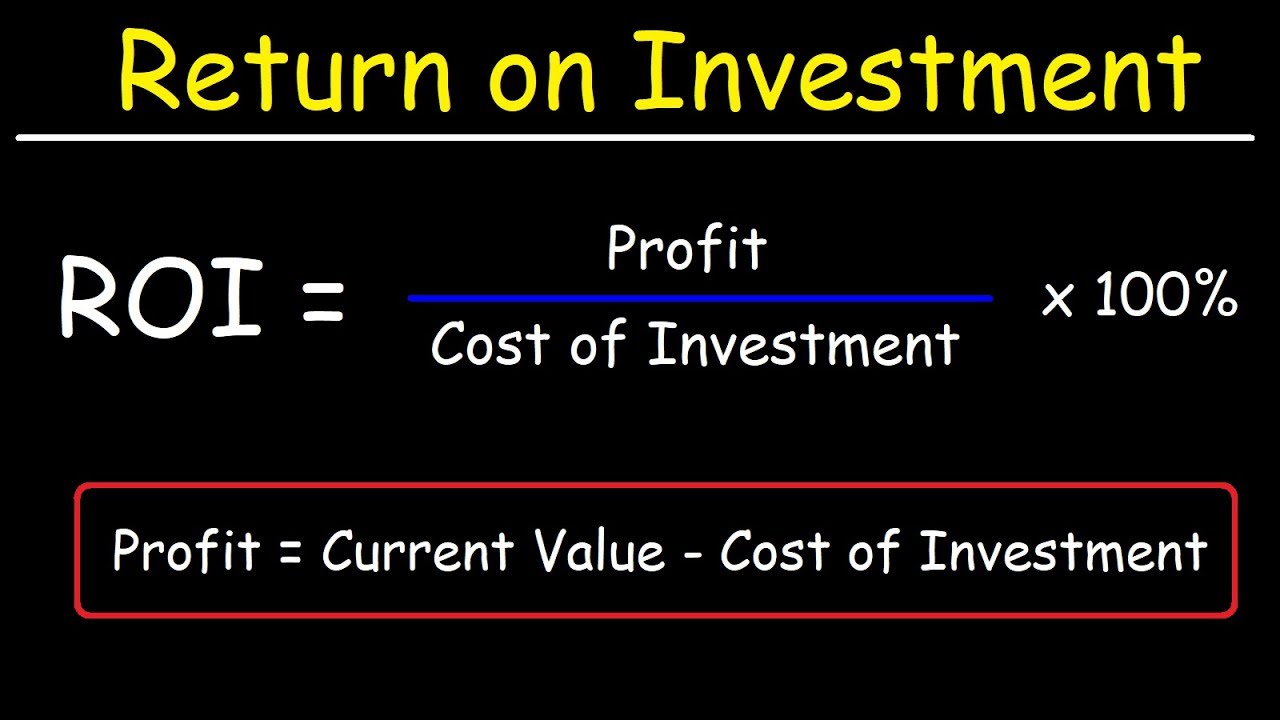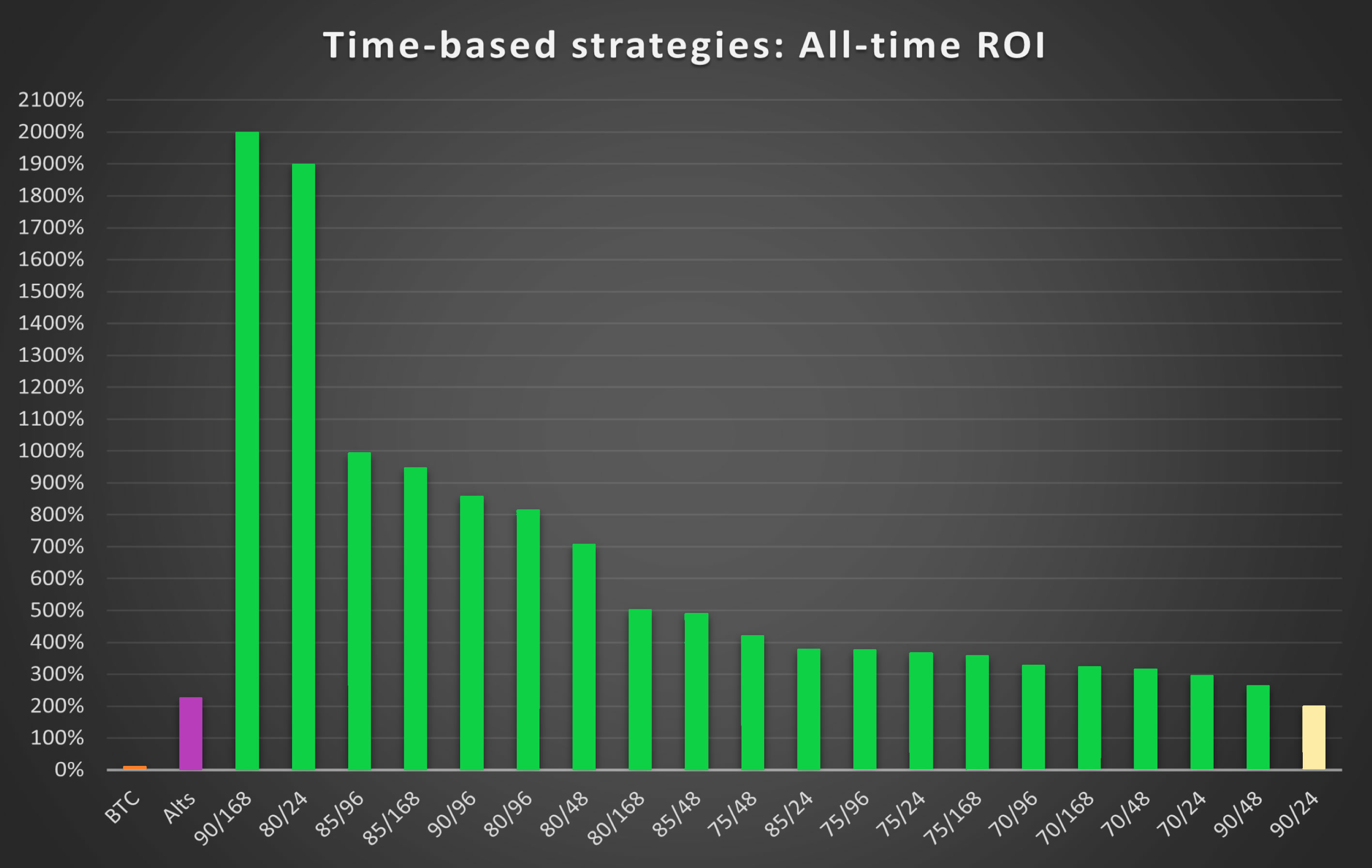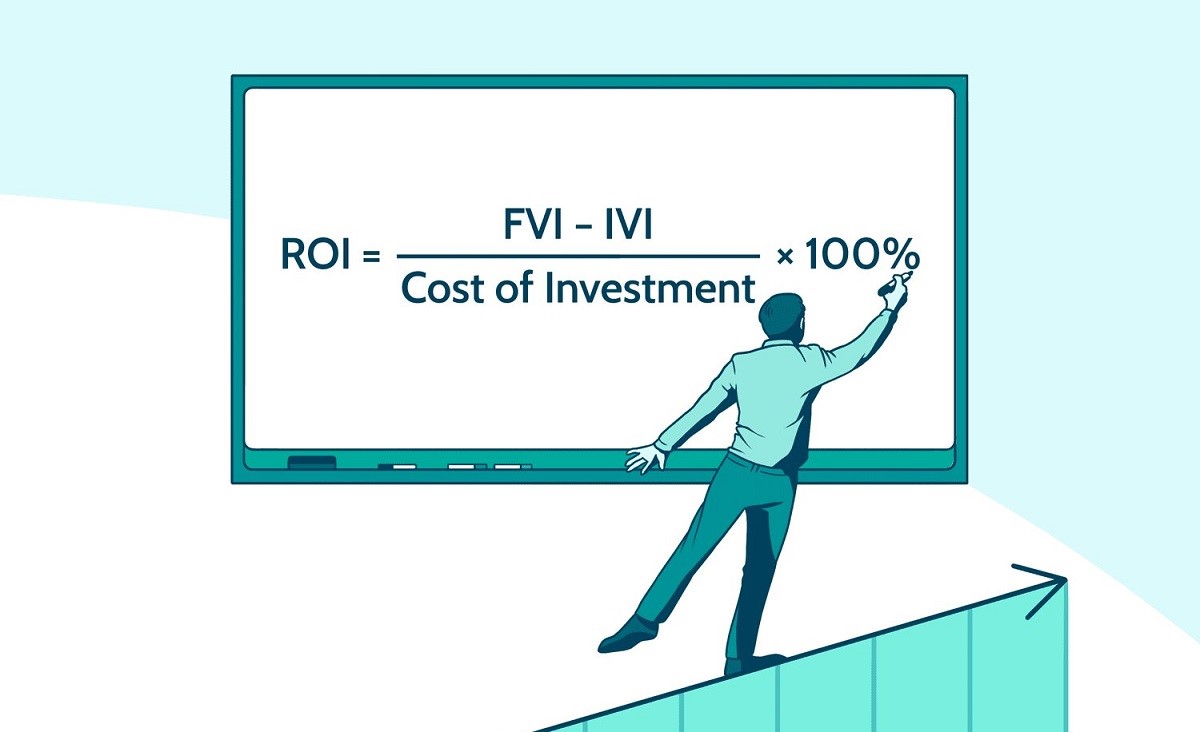Introduction
When making investments, it is crucial to have a clear understanding of the potential return you can expect. This is where ROI, or Return on Investment, comes into play. ROI is a widely used financial metric that calculates the profitability of an investment by comparing the gain or loss relative to its cost. By using ROI as a benchmark, investors can evaluate and compare various investment opportunities to make informed decisions.
In today’s fast-paced and dynamic business environment, it is essential to have a reliable and efficient method for comparing investments. The ability to compare different investment options allows investors to identify the ones that offer the best potential returns and align with their financial goals. In this article, we will explore various ways of calculating ROI and discuss which method makes it easiest to compare investments.
By understanding the different methods of calculating ROI, investors can gain valuable insights into the profitability and potential risks associated with their investment choices.
When it comes to evaluating the performance of investments, the most commonly used method is the simple ROI. This method provides a straightforward calculation by dividing the gain or loss by the initial cost of the investment. While simple ROI is easy to calculate, it does not consider the time value of money or the duration of the investment. This limitation led to the development of more advanced methods that take into account these factors.
Return on Investment (ROI) ratio is another common method used for comparing investments. This ratio calculates the net gain or loss relative to the initial investment, expressed as a percentage. The ROI ratio provides a standardized measure that allows investors to easily compare the profitability of different investments.
The Present Value of Cash Flows (PVCF) method takes into consideration the time value of money by discounting future cash flows to their present value. By discounting future cash flows, PVCF provides a more accurate representation of the investment’s profitability and enables investors to compare investments with different durations.
The Internal Rate of Return (IRR) method goes a step further by considering the discount rate at which the present value of cash inflows equals the initial investment. IRR provides a more comprehensive assessment of an investment’s profitability and considers the time value of money and the duration of the investment.
Payback period is another commonly used method to compare investments. It calculates the time it takes for an investment to recover its initial cost through cash inflows. The payback period is a simple and intuitive method, but it does not consider the profitability of the investment beyond the breakeven point.
When choosing a method for comparing investments, it is important to consider factors such as the nature of the investment, the time horizon, the risk tolerance, and the specific goals of the investor. Each method has its own strengths and limitations, and it is essential to select the one that aligns with your investment objectives and provides the most meaningful insights.
What is ROI?
ROI, or Return on Investment, is a financial metric used to measure the profitability of an investment. It provides a quantitative assessment of the gain or loss generated from an investment relative to its cost. ROI is expressed as a percentage and is widely utilized by investors, analysts, and businesses to evaluate the performance and potential returns of an investment.
The calculation of ROI is relatively straightforward. It involves dividing the net gain or loss of an investment by the initial cost and multiplying the result by 100 to obtain a percentage. The formula for calculating ROI is as follows:
ROI = [(Net Gain or Loss) / Initial Cost] x 100
The net gain or loss is determined by subtracting the initial cost of the investment from the final value, which includes any additional income or potential capital appreciation. The initial cost takes into account the purchase price of the investment, transaction fees, and any associated expenses.
ROI serves as a valuable tool for investors as it allows them to compare the profitability of different investments. By calculating the ROI for each investment option, investors can assess the potential returns and make informed decisions based on their financial goals and risk tolerance.
It is important to note that ROI is a relative measure and does not provide information on the actual monetary value gained or lost. For example, an ROI of 10% on a $1,000 investment would yield a net gain of $100. However, the same ROI percentage on a $1,000,000 investment would result in a net gain of $100,000. Thus, ROI should be used in conjunction with other financial metrics to gain a comprehensive understanding of an investment’s performance.
ROI can be calculated for various types of investments, including stocks, real estate, bonds, mutual funds, and businesses. It provides a standardized measure that allows for comparisons across different investment opportunities, regardless of their size or nature.
Furthermore, ROI can be utilized not only by individual investors but also by businesses to evaluate the success of their investments and allocate resources effectively. By tracking the ROI of different projects or initiatives, companies can make strategic decisions and prioritize investments that offer the highest returns.
Overall, ROI is a fundamental financial metric that provides valuable insights into the profitability and performance of investments. It helps investors and businesses alike in assessing the potential returns, making informed decisions, and maximizing their financial resources.
Why is it important to compare investments?
Comparing investments is a crucial step in the decision-making process for investors. It allows them to evaluate the potential returns, risks, and benefits of different investment options. Here are some key reasons why comparing investments is important:
1. Maximizing Returns: By comparing investments, investors can identify opportunities that offer higher potential returns. By assessing the different investment options available, investors can select those that align with their financial goals and have the potential to generate the highest profits.
2. Minimizing Risk: Comparing investments helps investors in diversifying their portfolios and reducing risk. By spreading investments across different assets or sectors, investors can mitigate the impact of potential losses and safeguard their investments against market fluctuations.
3. Optimizing Resources: Comparing investments enables investors to allocate their resources effectively. By evaluating the potential returns and risks associated with different investments, investors can allocate their capital and time towards opportunities that have the best chances of success.
4. Evaluating Performance: Comparing investments allows investors to assess the performance of their current holdings. By analyzing the returns and profitability of existing investments, investors can determine whether to continue holding or divest their assets and reallocate the resources into more promising opportunities.
5. Capitalizing on Market Opportunities: By comparing investments, investors can uncover market opportunities and trends. A thorough analysis of different investment options helps identify emerging industries, technologies, or sectors that have significant growth potential, allowing investors to capitalize on these opportunities.
6. Making Informed Decisions: Comparing investments provides investors with the necessary information to make informed decisions. It allows them to evaluate the financial viability, potential risks, and long-term prospects of various investments, enabling them to make choices based on a comprehensive understanding of the options available.
7. Aligning with Financial Goals: Comparing investments helps investors align their choices with their specific financial goals. Different investment options have varying risk-return profiles, and by comparing them, investors can select the investments that match their risk tolerance, time horizon, and financial objectives.
In summary, comparing investments is essential for investors to make informed decisions, optimize their returns, and manage risks effectively. By evaluating the potential returns, risks, and benefits of different investment options, investors can allocate their resources strategically, take advantage of market opportunities, and work towards achieving their financial goals.
Different ways of calculating ROI
There are several different methods for calculating ROI, each with its own advantages and considerations. Let’s explore some of the commonly used ways to calculate ROI:
1. Simple ROI: This is the most basic method of calculating ROI and is often used to get a quick assessment of an investment’s profitability. It is calculated by subtracting the cost of the investment from the final value and dividing the result by the initial cost. The formula for simple ROI is as follows:
Simple ROI = (Final Value – Initial Cost) / Initial Cost
2. Return on Investment (ROI) Ratio: The ROI ratio is a widely used method that provides a measure of the return generated from an investment relative to its cost. It is expressed as a percentage and is calculated by dividing the net gain or loss by the initial cost. The formula for ROI ratio is as follows:
ROI Ratio = (Net Gain or Loss / Initial Cost) x 100
3. Present Value of Cash Flows (PVCF): This method takes into account the time value of money, which recognizes that a dollar received in the future is worth less than a dollar received today. PVCF involves discounting future cash flows to their present value and summing them to determine the net gain or loss. This method provides a more accurate representation of the investment’s profitability and can be used to compare investments with different durations.
4. Internal Rate of Return (IRR): The IRR method considers both the investment’s cash inflows and outflows over its duration, taking into account the time value of money. It calculates the discount rate at which the present value of cash inflows equals the initial investment. The IRR provides insight into the annualized rate of return of an investment and helps assess its profitability and compare it to other investment opportunities.
5. Payback Period: The payback period measures the time required for an investment to recover its initial cost through cash inflows. It is a simple and intuitive method that ignores the profitability beyond the breakeven point. The payback period can be used to assess the liquidity of an investment and the time it takes for an investor to recoup their initial investment.
It is important to note that these methods have different strengths and limitations, and the choice of the method depends on the specific investment and the desired level of analysis. Some methods focus on the short-term profitability, while others consider the time value of money and the duration of the investment.
When comparing investments, it is essential to select the most appropriate method that aligns with your financial goals, risk tolerance, and investment timeframe. Additionally, it is recommended to use multiple methods to gain a comprehensive understanding of an investment’s performance and make well-informed decisions.
By using these different methods, investors can gain valuable insights into the profitability, risks, and potential returns of investments, enabling them to make informed decisions and allocate their resources more effectively.
Simple ROI
The simple ROI method is one of the most straightforward and commonly used ways to calculate the return on investment. It provides a quick and easy assessment of an investment’s profitability by comparing the gain or loss relative to the initial cost.
To calculate the simple ROI, you subtract the initial cost of the investment from the final value and then divide the result by the initial cost. The formula for simple ROI is as follows:
Simple ROI = (Final Value – Initial Cost) / Initial Cost
The final value represents the value of the investment at the end of the investment period, including any income or potential capital appreciation. The initial cost takes into account the purchase price of the investment, transaction fees, and associated expenses.
The resulting ratio is expressed as a decimal or percentage, indicating the return generated from the investment. A positive ROI indicates a gain, while a negative ROI represents a loss.
Simple ROI has some advantages. It is easy to understand and calculate, making it a useful tool for a quick assessment of an investment’s profitability. It also provides a basis for comparison between different investment options.
However, simple ROI has its limitations. It does not consider the time value of money or the duration of the investment. It assumes that the investment has a fixed duration and does not account for the timing of cash flows. Additionally, simple ROI does not incorporate the potential risks associated with the investment.
Simple ROI is best suited for short-term investments or when a quick assessment is needed. It is commonly used for evaluating stocks, bonds, and other liquid investments. For more comprehensive analysis and decision-making, other methods, such as the ROI ratio or discounted cash flow methods, may be more appropriate.
Overall, simple ROI provides a basic measure of an investment’s profitability, allowing investors to assess the returns relative to the initial cost. While it offers a quick assessment, it is important to consider the limitations and use it in conjunction with other financial metrics for a comprehensive analysis of an investment’s performance.
Return on Investment (ROI) Ratio
The Return on Investment (ROI) ratio is a widely used method for calculating and comparing the profitability of investments. It provides a standardized measure that allows investors to evaluate the return generated from an investment relative to its cost.
The ROI ratio is expressed as a percentage and can be calculated by dividing the net gain or loss by the initial cost of the investment and multiplying the result by 100. The formula for the ROI ratio is as follows:
ROI Ratio = (Net Gain or Loss / Initial Cost) x 100
The net gain or loss is the difference between the final value of the investment and the initial cost. It includes any income generated from the investment, such as dividends or interest, as well as potential capital appreciation. The initial cost takes into account the purchase price of the investment, transaction fees, and any associated expenses.
The resulting ROI ratio provides a measure of the return as a percentage of the initial investment. A higher ROI ratio indicates a more profitable investment, while a lower ratio suggests a lower return relative to the initial cost.
The ROI ratio offers several advantages. It provides a standardized measure that allows for easy comparison of investments, regardless of their size or nature. It also incorporates both the gain or loss and the cost of the investment, providing a comprehensive assessment of profitability.
However, the ROI ratio has limitations. It does not consider the time value of money or the duration of the investment. It assumes a one-time investment and does not account for the timing of cash flows. Additionally, the ROI ratio does not take into account the potential risk associated with the investment.
The ROI ratio is commonly used for evaluating different investment options, including stocks, real estate, and businesses. It helps investors determine which investments offer the best potential returns and align with their financial goals and risk tolerance.
By comparing the ROI ratios of different investment opportunities, investors can make informed decisions and allocate their resources toward the options that have the highest potential for profitability.
It is important to note that the ROI ratio should not be the sole factor in investment decision-making. Other financial metrics, such as the payback period, discounted cash flow analysis, and risk assessment, should also be considered to gain a comprehensive understanding of an investment’s performance.
Overall, the ROI ratio is a valuable tool for investors in evaluating and comparing the profitability of investments. By using this method, investors can gain insights into the return generated from an investment relative to its cost and make informed decisions to maximize their returns.
Present Value of Cash Flows (PVCF)
The Present Value of Cash Flows (PVCF) method is a more advanced approach to calculating the return on investment (ROI). It takes into account the time value of money by discounting future cash flows to their present value. This method provides a more accurate representation of an investment’s profitability.
The PVCF method involves assigning a discount rate to future cash flows based on the time value of money. The discount rate is typically the required rate of return or the cost of capital for the investment. By discounting future cash flows, the PVCF method calculates the net gain or loss in present value terms.
The PVCF can be calculated by adding up the present values of all net cash flows, including income received and expenses incurred throughout the investment duration. The present value is calculated by dividing the future cash flows by (1 + discount rate) to the power of the respective time period.
The PVCF method is useful for comparing investments with different durations and analyzing their profitability over time. It provides a more accurate measure as it considers the time value of money, recognizing that a dollar received in the future is worth less than a dollar received today.
However, it’s important to note that the PVCF method requires an estimation of future cash flows and an appropriate discount rate. The accuracy of the PVCF calculation depends on the quality of these inputs.
By using the PVCF method, investors can make more informed decisions by considering the present value of cash flows and evaluating the profitability and risks associated with different investment options.
It’s worth mentioning that the PVCF method is commonly used in various investment analyses, such as capital budgeting, real estate valuation, and assessing the feasibility of long-term projects. It allows investors to better assess the financial viability of an investment by taking into account the time value of money.
In summary, the PVCF method offers a more precise way to calculate the ROI by considering the present value of future cash flows and incorporating the time value of money. It provides a comprehensive analysis of an investment’s profitability, allowing investors to make better-informed decisions based on a more accurate representation of the investment’s true worth.
Internal Rate of Return (IRR)
The Internal Rate of Return (IRR) is a method used to calculate the potential return on an investment. It considers both the cash inflows and outflows associated with the investment over its duration. The IRR provides a comprehensive assessment of an investment’s profitability and helps investors compare different investment opportunities.
The IRR is defined as the discount rate at which the present value of the cash inflows equals the initial investment. In other words, it is the rate that makes the Net Present Value (NPV) of the investment zero.
Calculating the IRR can be done manually using trial and error, but it is typically done using financial software or spreadsheet programs. The IRR is the rate at which the sum of the present values of future cash flows equals the initial investment. If the IRR is greater than the required rate of return or cost of capital, the investment is considered profitable.
The IRR is expressed as a percentage and represents the annualized rate of return of an investment. By comparing the IRR of different investment opportunities, investors can evaluate and select investments that offer the highest potential returns.
One advantage of using the IRR method is that it takes into account the timing and magnitude of cash flows. It recognizes that cash received in the earlier years of an investment has a higher present value than cash received in later years, considering the time value of money.
However, it’s important to note that the IRR method has a few limitations. For example, it assumes that cash flows generated from the investment are reinvested at the same rate as the IRR itself, which may not be realistic. In addition, the IRR may yield multiple solutions or may not exist in certain cases, making interpretation more complex.
Despite its limitations, the IRR method provides valuable insights into the potential profitability of an investment. By assessing the IRR of different investment options, investors can evaluate their expected returns and make better-informed decisions regarding capital allocation.
The IRR method is commonly used in financial analysis, capital budgeting, and investment appraisal. It complements other metrics, such as the ROI ratio and PVCF, in evaluating investment opportunities and assessing their financial viability.
In summary, the IRR method offers a comprehensive way to calculate the potential return on an investment. It considers the timing and magnitude of cash flows, providing a more accurate assessment of an investment’s profitability. While the IRR has limitations, it remains a valuable tool for comparing and selecting investment opportunities.
Payback Period
The payback period is a method used to evaluate the amount of time it takes for an investment to recover its initial cost through cash inflows. This method provides a simple and easy way to assess the liquidity and breakeven point of an investment.
To calculate the payback period, you analyze the cash flows generated by the investment and determine how long it takes for the cumulative cash inflows to equal or exceed the initial cost. The payback period is expressed in terms of years or months.
Investors typically set a specific desired payback period based on their investment goals and risk tolerance. If an investment’s payback period is shorter than the desired period, it is considered favorable. On the other hand, if the payback period exceeds the desired timeframe, it may be deemed less attractive.
The payback period method is straightforward and easy to understand. It provides a quick assessment of an investment’s liquidity, indicating how soon an investor can recoup their initial investment. This can be particularly useful for businesses that require faster returns or have limited financial resources.
However, the payback period method has limitations. It does not consider the profitability of an investment beyond the breakeven point. It also does not account for the time value of money, making it less suitable for long-term or capital-intensive investments.
Despite these limitations, the payback period method is still valuable for certain investment evaluations. It helps investors assess the initial recovery of their investment and make decisions based on the expected timeframe for recouping the capital.
Furthermore, the payback period method can be used alongside other investment appraisal techniques, such as the ROI ratio or PVCF, to gain a more comprehensive understanding of an investment’s financial viability.
Overall, the payback period is a useful method for evaluating the liquidity and time it takes to recover the initial cost of an investment. While it may not provide a complete analysis of profitability, it serves as a quick indicator and can be beneficial in certain investment decision-making scenarios.
Factors to consider when choosing a method
When choosing a method for comparing investments, it is crucial to consider several factors to ensure that the method aligns with your investment goals and provides meaningful insights. Here are some key factors to consider:
1. Nature of the Investment: Different investment types may require different methods for evaluation. For example, stocks and bonds may be better analyzed using techniques like ROI ratios or IRR, while real estate investments may benefit from methods like PVCF. Consider the unique characteristics and cash flow patterns of the investment to determine which method will provide the most accurate assessment.
2. Time Horizon: The duration of the investment is an important factor to consider. Short-term investments may be better evaluated using methods like simple ROI or payback period, while long-term investments may benefit from methods that consider the time value of money, such as PVCF or IRR. Align the investment’s time horizon with a method that accounts for the expected cash flows over that period.
3. Risk Tolerance: Different methods consider risk differently. For example, the IRR method incorporates the required rate of return, which reflects the investor’s risk tolerance. Higher-risk investments may require more sophisticated methods that consider risk factors such as volatility or uncertainty. Consider the level of risk associated with the investment and select a method that adequately addresses these risk considerations.
4. Financial Goals: Your financial goals play a crucial role in choosing the appropriate method. Consider whether your primary objective is capital preservation, income generation, or capital appreciation. Different investment goals may require different metrics and methods to assess their alignment with your specific objectives.
5. Complexity and Accuracy: Some methods, such as PVCF or IRR, are more complex and require more detailed inputs. These methods provide a more accurate assessment of an investment’s profitability but may also require more effort to calculate. Consider your level of comfort with complexity and your access to accurate financial data when choosing a method.
6. Use in Combination: While each method provides valuable insights, using multiple methods in combination can provide a well-rounded evaluation of an investment. Consider using different methods to cross-validate the results and gain a comprehensive perspective.
By considering these factors, you can choose a method that best suits your investment needs and provides the most meaningful analysis. It is essential to tailor the choice of method to the characteristics and objectives of your specific investment, allowing you to make well-informed decisions that align with your goals and risk tolerance.
Conclusion
Comparing investments is a fundamental step in the investment decision-making process. It allows investors to evaluate the potential returns, risks, and benefits of different investment options. By utilizing various methods such as simple ROI, ROI ratio, PVCF, IRR, and payback period, investors can gain valuable insights into the profitability and performance of investments.
Simple ROI provides a quick assessment of an investment’s profitability, while the ROI ratio offers a standardized measure for comparing different investments. The PVCF method takes into account the time value of money and is particularly useful for analyzing investments with varying durations. The IRR method considers both the timing and magnitude of cash flows, providing an annualized rate of return. The payback period method helps investors evaluate the liquidity and breakeven point of an investment.
When choosing a method for comparing investments, it is crucial to consider factors such as the nature of the investment, time horizon, risk tolerance, financial goals, complexity, and accuracy. Each method has its own strengths and limitations, and the choice of method should align with the specific investment and investment objectives.
It is important to note that no single method provides a complete analysis of an investment’s performance. Therefore, investors may consider using multiple methods to gain a comprehensive understanding of an investment’s profitability and risks.
Ultimately, comparing investments is essential for investors to make informed decisions, optimize returns, manage risks effectively, and align investments with their financial goals. By evaluating the potential returns, risks, and benefits of different investment options, investors can allocate their resources strategically and work towards achieving their financial objectives.

























